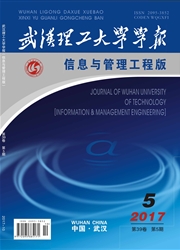

 中文摘要:
中文摘要:
引入分段效用函数,提出了基于层级模型的嵌套型公共设施选址模型。该模型以实现系统的服务效率最大化为目标,考虑服务水平的嵌套性、基本需求全覆盖、需求单一分配、效用优先分配及设施最大容量约束等条件,利用遗传算法,以武汉市某区医院选址问题为例进行案例分析,并将按效用分配与按距离分配的情况进行对比分析,就嵌套情况与非嵌套情况进行比较和讨论。结果表明,按效用分配的嵌套型服务系统具有较高的系统效率。
 英文摘要:
英文摘要:
The sub-utility function was adopted to set up a public facility location model based on nested hierarchy.The efficiency of system maximization was realized.The constraints of the model included nested hierarchy,the whole coverage of basic demand,single-assignment,assignment-based utility and the maximum capacity of facility.As a real-world case,the genetic algorithm has been used to solve the problem based on a district in Wuhan,in which three scenarios are discussed:location-allocation under nested circumstance,the comparison between assignment-based utility and distance-based and the contrast between nested case and non-nested one.The result shows that the nested service system based on utility assignment has a high efficiency.
 同期刊论文项目
同期刊论文项目
 同项目期刊论文
同项目期刊论文
 期刊信息
期刊信息
